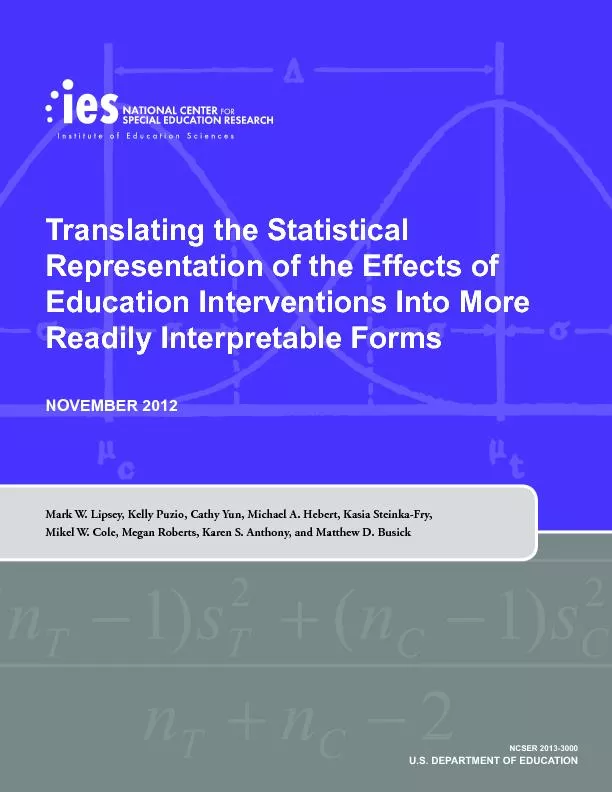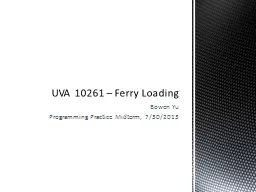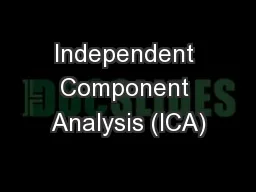PDF-NCSER 2013-3000 U.S. DEPARTMENT OF EDUCATION
Author : phoebe-click | Published Date : 2016-07-19
Translating the Statistical Mark W Lipsey Kelly Puzio Cathy Yun Michael A Hebert Kasia SteinkaFry Mikel W Cole Megan Roberts Karen S Anthony and Matthew D Busick Page
Presentation Embed Code
Download Presentation
Download Presentation The PPT/PDF document "NCSER 2013-3000 U.S. DEPARTMENT OF EDUCA..." is the property of its rightful owner. Permission is granted to download and print the materials on this website for personal, non-commercial use only, and to display it on your personal computer provided you do not modify the materials and that you retain all copyright notices contained in the materials. By downloading content from our website, you accept the terms of this agreement.
NCSER 2013-3000 U.S. DEPARTMENT OF EDUCATION: Transcript
Download Rules Of Document
"NCSER 2013-3000 U.S. DEPARTMENT OF EDUCATION"The content belongs to its owner. You may download and print it for personal use, without modification, and keep all copyright notices. By downloading, you agree to these terms.
Related Documents














